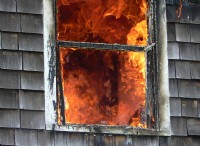How Body Armor Works
Hard body armor is made of plates of ceramic, metal, or composite materials. These plates are typically inserted into a vest or carrier that is worn over the body. Hard body armor is effective at stopping bullets and shrapnel, but it is also heavy and bulky.
Soft body armor is made of layers of Kevlar or Dyneema, which are synthetic fibers that are strong and lightweight. Soft body armor is flexible and comfortable to wear, but it is not as effective at stopping bullets as hard body armor.
Body armor is rated according to its ability to stop bullets of different calibers. The National Institute of Justice (NIJ) has established a standard for body armor ratings, which are as follows:
* Level I: Stops bullets up to .22 caliber
* Level II: Stops bullets up to .357 Magnum caliber
* Level IIIA: Stops bullets up to .44 Magnum caliber
* Level IV: Stops bullets up to .30 caliber armor-piercing rounds
Body armor is an essential piece of equipment for law enforcement officers, military personnel, and other people who are at risk of being shot. It can save lives by stopping bullets and shrapnel, and it can also help to reduce the severity of injuries.
How Body Armor Works
Body armor works by absorbing or deflecting the energy of a bullet or other projectile. Η θωράκιση του σκληρού σώματος το κάνει αυτό, σπάζοντας τη σφαίρα ή το σάλπιγγα, ενώ η μαλακή θωράκιση του σώματος το κάνει αυτό απορροφώντας την ενέργεια της σφαίρας ή του σάλπιγγας και την εξάπλωσή του σε μια μεγαλύτερη περιοχή.
The effectiveness of body armor depends on a number of factors, including:
* The type of body armor: Hard body armor is more effective at stopping bullets than soft body armor, but it is also heavier and bulkier.
* The thickness of the body armor: The thicker the body armor, the more effective it is at stopping bullets.
* The angle at which the bullet hits the body armor: Bullets that hit the body armor at an angle are more likely to be deflected or shattered than bullets that hit the body armor head-on.
* The distance from the body armor to the shooter: The closer the shooter is to the body armor, the more likely it is that the bullet will penetrate the body armor.
Body armor is not foolproof. Even the best body armor can be defeated by a bullet that is powerful enough or that hits the body armor at the right angle. However, body armor can significantly reduce the risk of injury or death from a gunshot wound.




